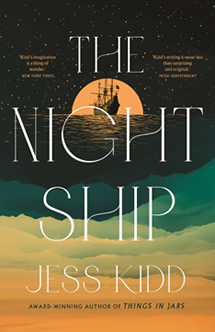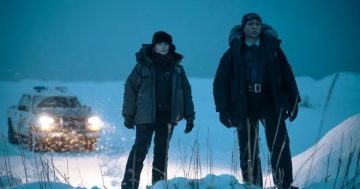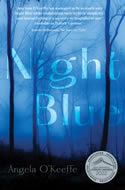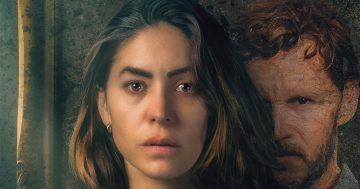Reviewed by Robert Goodman.
By Jess Kidd, Penguin.
 In The Night Ship, Jess Kidd brings together two disparate stories joined by location but separated by hundreds of years. The first, the wreck of the Batavia in 1629, is one of the most famous shipwreck stories in Australian history. The second is set on the remote Abrolhos islands where the Batavia foundered, islands that in the twentieth century became the heart of a valuable crayfishing industry.
In The Night Ship, Jess Kidd brings together two disparate stories joined by location but separated by hundreds of years. The first, the wreck of the Batavia in 1629, is one of the most famous shipwreck stories in Australian history. The second is set on the remote Abrolhos islands where the Batavia foundered, islands that in the twentieth century became the heart of a valuable crayfishing industry.
The Dutch trading ship Batavia ran aground and sank near a small coral island off the coast of north-western Australia en route to its namesake port in 1629. The small group of islands was practically devoid of food and water, and human nature being what it is, the survivors descended into a tribal, murderous bacchanal before help could arrive. Plenty of books have been written about the Batavia and the events following its grounding. There has not been as much written about the modern history of the Abrolhos Islands, but Emily Brugman’s recent debut The Islands provides an insight into to the lives of the families who established the crayfishing industry there. In The Night Ship Jess Kidd connects these two stories across hundreds of years.
The Night Ship is the story of two nine-year-old children – Mayken, a passenger on board the Batavia, and Gil, a boy sent to live with his crotchety fisherman grandfather on a remote island after his mother’s death in the late 1980s. There is something of a legend of a child’s ghost on the island, but this is not a ghost story. Instead Kidd leans into the deep resonances between two very different stories connected by place.
Mayken’s story starts in Holland. She is being sent with a nursemaid to be with her father in Batavia on the pretence that her mother (who has become pregnant to another man) has died. She is one of the many passengers on the new trading ship Batavia, part of the Dutch East India Company’s fleet. Mayken, a curious girl, is not content to just be a passenger and, dressed as a cabin boy, finds her way into the bowels of the ship. In these passages particularly, Kidd gives a visceral sense of life below decks and brings a dark, dangerous and miasmic reality to life aboard a Dutch trading vessel in the seventeenth century.
At the bottom of the steps Pelgrom holds up a lantern. Mayken can see that they are hemmed in on all sides by crates. They squeeze through a walkway so narrow that Pelgrom, thin as he is, must turn sideways and breathe in. There are crates packed to the ceiling, stacked barrels of vinegar and wine, cannonballs racked neatly. Bundles of wood for the cook’s stove are pushed into every crevice. There is no space for air.
Kidd showed her flair for the gothic in her last novel, Things in Jars, a Victorian mystery with a supernatural bent. And she continues to develop in that direction, in a slightly more naturalistic way, in the Batavia sections of The Night Ship. The supernatural here is in Mayken’s mind – a mythical beast called the Bullebak, an eel-like creature who, she is told, lurks in the bowels of the ship and ‘enjoyed drowning children and eating them, it liked to give grown people fatal bites or just play tricks on them’. When she asks why the creature is on the Batavia, she is told it is because the ship has ‘the juiciest cargo, plenty of people to feed on and fast passage to a new land’. In some ways, after the Batavia runs aground and the survivors start to turn on each other, it is easier to believe events have a mythological cause rather than merely man’s inhumanity to man.
Three hundred years later, Gil is suffering after the actual death of his mother. He is sent to his last living relative, an old fisherman on one of the Abrolhos Islands who has cut himself off from the rest of the small island community. Gil, much like Mayken, is irrepressible and soon has made his own connections with the locals, including with the scientists who are excavating on the Island and in the surrounding sea for the wreck of the Batavia. This is a very different environment to below decks on the Batavia – wide open, bright and empty:
They walk and Silvia tells [Gil] that these are the Abrolhos Islands and Abrolhos comes from the Portuguese for open your eyes, or watch out, or maybe put your frigging eyes back in, or all of these things …
‘Frank says that from a light aircraft they all look like scabs.’
Gil tries to imagine it, the clusters of ugly, flat islands.
It is a much easier place to be alone than shipboard:
Gil inhales. He is alone with the mineral air and hard-shelled creatures. Alone with the briny fish and bitter land shrubs and the warm brown birds nesting in their shingly holes. Alone with the lap of the sea on the shingle and the breezes. Alone with a sky full of unnamed stars.
In an echo of Mayken’s enjoyment playing as a cabin-boy, Gil enjoys dressing in his grandmother’s old clothes:
Day dresses, belted, with Granny Iris’s slippers shoved inside to make dramatic shoulders. Glitzed with brooches. Textures of silk and lace and dazzling man-made fibres. Fun with scarves: bandeau, bandana, sarong.
While he is encouraged by another of the islanders he befriends, when this predilection is discovered, it puts him at odds with the conservative fishing community.
Gil is also dealing with the supernatural – in his case the legend of the bunyip, an ‘attempt to give fear a shape’, and the islanders’ belief in the ghosts of the Batavia, epitomised by a Raggedy Tree, where toys are left for the ghost of a little girl they call May.
Like an archaeologist herself, Kidd uses her narrative to reveal the layers of history and story associated with a single location and the way events can reverberate through the years. While a supernatural connection is implied, the two stories are really reinforced by the deep resonance between the characters and their experiences. So that a real swim by one of the Batavia survivors to try and bring supplies from the sinking ship becomes an event at the local fair 350 years later. Whether or not the ghost of Mayken haunts the island, the Raggedy Tree itself is a solid reminder to Gil of the bloody history of the place and a way in which he can commune with that history.
There are many books around at the moment featuring children as narrators and protagonists. But Kidd has created such delightful characters – both very different but also similar in key ways – that it is a joy to spend to time with them. And what Kidd does well in The Night Ship is to give a child’s view of the world that also provides insight into the interactions of the adults around them in a way that allows the reader to understand what is going on. While there is a large body of both true and fictional works centred around the Batavia, The Night Ship provides new insights into both that benighted voyage and the isolated islands on which the survivors found themselves.
This review first appeared in Newtown Review of Books.
More than 800 more book reviews can be found on Pile by the Bed.










